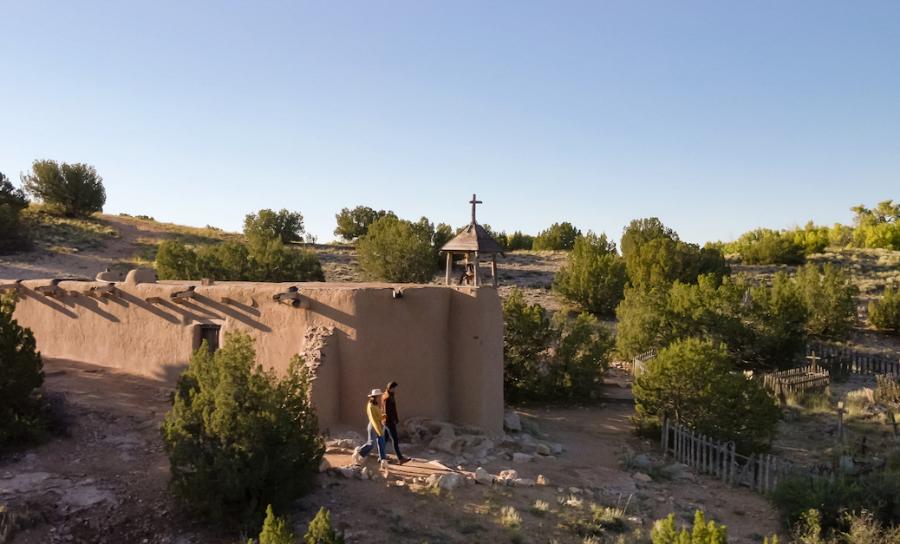Teacher Julia Gomez took up a new educational mission after retirement: teaching visitors at El Rancho de las Golondrinas about Spanish colonial lifeways. The acclaimed colcha artist picked up the Spanish style of embroidery decades ago, but didn’t master the art until she began volunteering at Las Golondrinas, a living history museum dedicated to 18th- and 19th-century culture, set on 200 rural acres in a Santa Fe County valley south of New Mexico’s capital city. Original colonial buildings there date to the early 1700s and volunteers carry on heritage practices from that era. The 79-year-old Gomez has won several awards from Spanish Market, an annual event that highlights Spanish colonial art forms, including colcha.

I began learning colcha about 40 years ago; however, I didn’t learn the entire process—from shearing the sheep to dyeing the wool—until I began volunteering at El Rancho de las Golondrinas in 2000. The embroidery technique traveled up El Camino Real from Mexico City with the Spanish settlers. I fell in love with it because the history of colcha is my history. It’s also New Mexico’s history. It’s important to me to carry on this tradition so children can learn about this history too.

It all begins with the sheep. At Las Golondrinas, we raise churro sheep for wool. In Spain, those were peasant sheep because their wool was very coarse. Only the peasant sheep came to the New World. On the frontier, peasant sheep became prize sheep because they adjusted so well to the new environment.
Once the fiber is sheared, it’s trimmed and cleaned. Then it’s carded to align the fibers. Usually, children would do the carding, so we invite children who visit to try it. It’s very hands-on. After carding, the wool is spun on a malacate, a lap spindle, just like the ones they would have used in the 18th century.

Then we dye the wool with natural dyes made from native plants. I spend all year collecting. If people see me on the side of the road, it’s because I’m collecting. We gather beautiful spring flowers called cota, or Navajo tea, which makes a beautiful yellow dye. There’s indigo for blue, marigold for orange, yerba de víbora, or snakeweed, for sage green, and dried female cochineal insects for bright red.
Originally, Spanish women used embroidery to mend holes in fabric and in bedspreads, which were called colchas, but over time, they made sabanilla, a utilitarian cloth, and embellished that as well. Some people embroidered religious images on cloth for home altars because there were no churches in this far-away place. We demonstrate how to weave sabanilla at Las Golondrinas. I believe this background weaving is as much a part of my art as the embroidery.
I love to talk to the children about how the colonists lived in New Mexico. When I was in school, I was only taught about the settlers that came from Europe and landed at Plymouth Rock. However, the colonists in New Mexico came to what is now America even earlier and created a functioning society. My friends and I also teach about colcha as a tribute to the women who came up El Camino Real, lived in this land, and worked so hard to make a living. With just a needle and thread, they brought a lot of beauty to this area.

At Las Golondrinas, we have people who demonstrate blacksmithing, tanning leather, baking, and making corn-husk dolls and papel picado, the cut-paper designs. We must have a costume gene because we love to dress up and wear our period-correct clothing, some of which we make ourselves!
There are artists all over Santa Fe County who carry on traditional arts, like carving bultos, the wooden figures of saints, and painting retablos of religious scenes. There are places where you can experience history. That’s one of the great things about this area: no matter where you go, you’re connecting to history.

